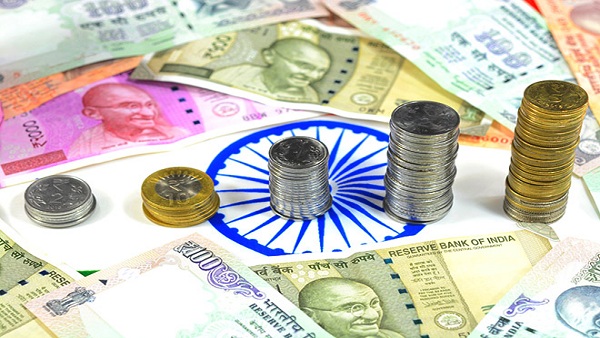DSP Small Cap
The fund’s goal is to achieve long-term capital appreciation by investing in a portfolio that is mostly made up of small-cap stocks. The NAV of the DSP Small Cap Fund for Oct 01, 2021 is 112.75.
DSP Small Cap Direct Plan is in charge of assets worth Rs 8,000 crores (AUM). The fund’s expense ratio is 1.04 percent, which is higher than the expense ratios charged by most other Small Cap funds. The last year’s returns were 75.49 percent. It has returned an average of 23.57 percent per year since its inception.
Chemicals, Textiles, Automobiles, Metals, and Construction make up the majority of the fund’s holdings. Nilkamal Ltd., Ipca Laboratories Ltd., Atul Ltd., Chambal Fertilisers & Chemicals Ltd., and TI Financial Holdings Ltd. are the fund’s top five holdings.
A 3-year SIP of Rs 10,000 would make a profit of Rs3.08 Lakh with the current value of investment of Rs 6.68 lakh.
DSP Flexi Cap Fund
DSP Flexi Cap Fund Direct Plan-Growth manages assets of Rs 6,744 crores (AUM). The fund’s expense ratio is 0.91 percent, which is comparable to the expense ratios charged by most other Multi Cap funds.
DSP Flexi Cap Fund Direct Plan has a 1-year growth rate of 65.62 percent. It has generated an average yearly return of 17.00% since its inception.
ICICI Bank Ltd., HDFC Bank Ltd., Ultratech Cement Ltd., Infosys Ltd., and Bajaj Finance Ltd. are the fund’s top five holdings. The scheme aims to achieve long-term capital appreciation through a portfolio that is primarily comprised of equities and equity-related assets, with a portion of its corpus invested in debt and money market instruments.
With a current investment value of Rs 5.81 lakh, a three-year SIP of Rs 10,000 would yield a profit of Rs 2.21 lakh. The fund has a 4 Star rating from the CRISIL rating agency.
DSP Tax Saver
The DSP Tax Saver Direct Plan-Growth manages assets of Rs 9,675 crores.
The DSP Tax Saver Direct Plan’s 1-year growth returns are 69.27 percent. It has returned an average of 18.86 percent per year since its inception. ICICI Bank Ltd., Infosys Ltd., HDFC Bank Ltd., Axis Bank Ltd., and State Bank of India are the fund’s top five holdings.
The scheme aims to generate medium to long-term capital appreciation through a diversified portfolio that is primarily comprised of corporate equity and equity-related instruments, as well as provide investors with a tax benefit under the income tax act. The NAV of the DSP Tax Saver Fund for Oct 01, 2021, is 87.22.
DSP Equity Opportunities Fund
DSP Equity Opportunities Direct Plan-Growth manages assets of Rs 6,956 crores (AUM). The fund’s expense ratio is 0.97 percent, which is comparable to the expense ratios charged by most other Large & MidCap funds.
The DSP Equity Opportunities Direct Plan’s 1-year growth returns are 66.21 percent. It has had an average yearly return of 17.94% since its inception.
The fund’s top 5 holdings are in ICICI Bank Ltd., HDFC Bank Ltd., Infosys Ltd., Axis Bank Ltd., State Bank of India.
The scheme aims to generate long-term growth through a portfolio of large and midcap companies’ equity and equity-related securities. DSP Equity Opportunities Fund’s NAV on October 1, 2021, is 391.62.
With a current investment value of Rs 5.72 lakh, a three-year SIP of Rs 10,000 would yield a profit of Rs 2.12 lakh. The fund has a 4 Star rating from the CRISIL rating agency.
DSP Natural Resources and New Energy Fund
DSP Natural Resources and New Energy Fund Direct Plan-Growth manages assets worth 735 crores (AUM). The fund’s expense ratio is 1.23 percent, which is higher than the expense ratios charged by most other Thematic-Energy funds.
DSP Natural Resources and New Energy Fund Direct Plan-Growth returns were 94.00 percent in the previous year. Since its launch, it has delivered 17.88% average annual returns. The fund has 5-star rating from the CRISIL Rating agency.
The scheme will invest in equity and equity-related securities of Indian companies, as well as a portion of equity and equity-related securities of foreign companies whose primary economic activity, is the discovery, development, production, or distribution of natural resources, such as energy, mining, and so on.
5 Best Performing Equity Mutual Fund SIPs From DSP Mutual Fund
| Fund name |
NAV |
1-year return |
3-years return |
| DSP Small Cap |
Rs 112.76 |
75.01% |
27.66% |
| DSP Flexi Cap Fund |
Rs 67.32 |
63.90% |
23.81% |
| DSP Tax Saver |
Rs 87.22 |
67.27% |
23.77% |
| |
DSP Equity Opportunities Fund
Rs 363 |
64.65% |
20.60% |
| DSP Natural Resources,New Energy Fund |
Rs 57.20 |
94% |
17.83% |
SIPs are best way to invest in Equity Mutual Funds
The most significant advantage of SIP is rupee cost averaging. SIP can help you cost average your investments even if you invest at highs and markets fall. Wealth is built over a long period of time. As a result, do not interrupt your SIP at any cost. When it comes to investing, a time horizon is critical in determining where to place your money based on your financial goals. For a long-term aim like retirement, for example, the investments should be more growth-oriented. In the meantime, a 3-year target is “near-term and urgent,” thus capital protection is the first priority.
Disclaimer
Investing in mutual funds poses a risk of financial losses. Investors must therefore exercise due caution. Greynium Information Technologies and the author are not liable for any losses caused as a result of decisions based on the article. The above article is for informational purposes only and investors should exercise some discretion.

















